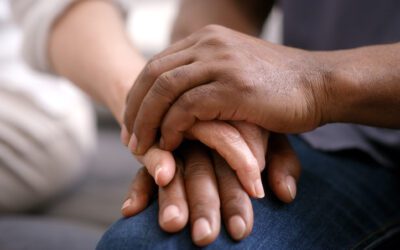In honor of National Men’s Health Month in June, we’re taking a closer look at how traditional gender norms negatively affect men’s mental health in the United States and especially in Maine—a phenomenon that, as therapists, many of our readers will have observed firsthand.
In the article, we’ll cover how our culturally created and reinforced ideas of how a man “should” act impact the rates and reporting of mental health issues, including depression and eating disorders, and, relatedly, how certain, more-traditional models of masculinity can contribute to stigma around mental health, with damaging consequences to men’s willingness to access mental health services.
Depression Symptoms in Men Versus Women
Partly due to gender norms perpetuated in our culture, men and women can present symptoms of mental and physical illnesses differently. This can lead to health-related problems going undiagnosed, and that lack of diagnosis (or late diagnosis) can alter the course of a person’s life.
For example, men are more likely to report symptoms of fatigue, irritability and/or rage, risk-taking, and loss of interest in work or hobbies when they are suffering from depression, according to Mental Health America. Women, in turn, are more likely to report feelings of sadness or worthlessness. One way of framing the difference is that men’s reported symptoms tend to be expressed as outwardly directed feelings and behaviors, while women’s reported symptoms tend to be more inwardly directed.
How to Assess Depression in Men
How we measure depression clinically, of course, changes how we treat it—or even if we treat it at all.
Officially, more than 6 million men in the U.S. report suffering from depression each year, but we know that many more cases go undiagnosed. It follows that the questions we ask as mental health providers and the use of gender-inclusive diagnostic scales can have a profound impact, as a 2013 study in JAMA Psychiatry found.
When a gender-inclusive scale is used, 30.6 percent of American males are found to have experienced a period of depression in their lifetimes, with no significant difference between sexes in rates of lifetime depression. However, when traditional depression scales are used, depression is found to be more common in women than in men.
It’s worth noting here that the State of Maine reports rates of diagnosed depression as higher in females, at 25.9%, than in males, at 16%. Because the State of Maine does not use a gender-inclusive scale when measuring depression, it is likely that many men who suffer from depression are not being counted, and we may be missing a large segment of the adult population in our diagnoses and treatments.
Men and Suicide Rates in Maine and the U.S.
The suicide rate among men in the United States is an unacceptable four times higher than it is for women, according to the Centers for Disease Control and Prevention, and it has been on the rise since 2000. Suicide deaths follow a similar trend in Maine, with significantly higher rates among men (24.3 per 100,000) than females (7.9 per 100,000). The suicide rate in our state is higher than the national rate (15.9 per 100,000, compared to 13.5), according to the 2019 Maine Shared Community Health Needs Assessment Report.
Given how far fewer men are diagnosed with depression when traditional depression scales are used, it is worth considering whether the suicide rate could be lowered simply by universally employing gender-inclusive depression scales in our field, thereby treating the depression before it can potentially manifest into suicidal ideation or suicide.
Masculinity and Access to Mental Health
One thing is clear, when we consider the underdiagnosed, under-cared-for rates of depression and national suicide rates for men in America: we need to improve accessibility to our services.
According to the National Health Interview Survey, only one in four men with depression has spoken to a mental health professional. This sobering statistic is likely due to influential social norms of masculinity, among which are the hyperinflation of emotional control and self-reliance, as measured in the widely used Conformity to Masculine Norms Inventory developed by James R. Mahalik and colleagues.
The net result of these influential social norms of masculinity is American men who are reluctant to talk and who downplay their symptoms when experiencing mental health issues, including depression, substance use, and stressful life events. Moreover, male minorities are even less likely than White men to seek assistance for mental health. The more we can reduce all barriers to mental health treatment across our field—and that includes stigma—the more we can be of service.
How Cultural Norms Affect Men with Eating Disorders
As we see with depression, men with eating disorders, such as muscle dysmorphia, are less likely to seek professional help than women, and once again gender expectations are the likely culprit. Men currently make up approximately 30 percent of eating disorder diagnoses, which is actually an uptick from previous years’ statistics, according to social psychologist Jaclyn A. Siegel, PhD. “Self-reliance is one characteristic of traditional masculinity,” Dr. Siegel said in a recent interview. “Because of this, men are less likely to seek help for medical and psychological conditions. … I suspect that every statistic we have about men with eating disorders is an underrepresentation of the actual number, because it’s not stereotypically masculine to admit to having these conditions, and it’s definitely not stereotypically masculine to go to a doctor or a specialist and get a diagnosis.”
Dr. Siegel goes on to note that men in the LGBTQ+ community are at an elevated risk for eating disorders, and that more research is needed on Black men’s experiences with body image, eating disorders, and other mental health issues.
Conclusion
When we have evidence of men feeling limited in their willingness and ability to access mental health treatment for issues like depression and eating disorders due to social stigma and traditional models of masculinity, it is time to reconsider how those models are serving us as a culture. What might the mental health of our nation’s men look like if we were to adopt more flexible gender norms that allowed for personal expression and authenticity?




